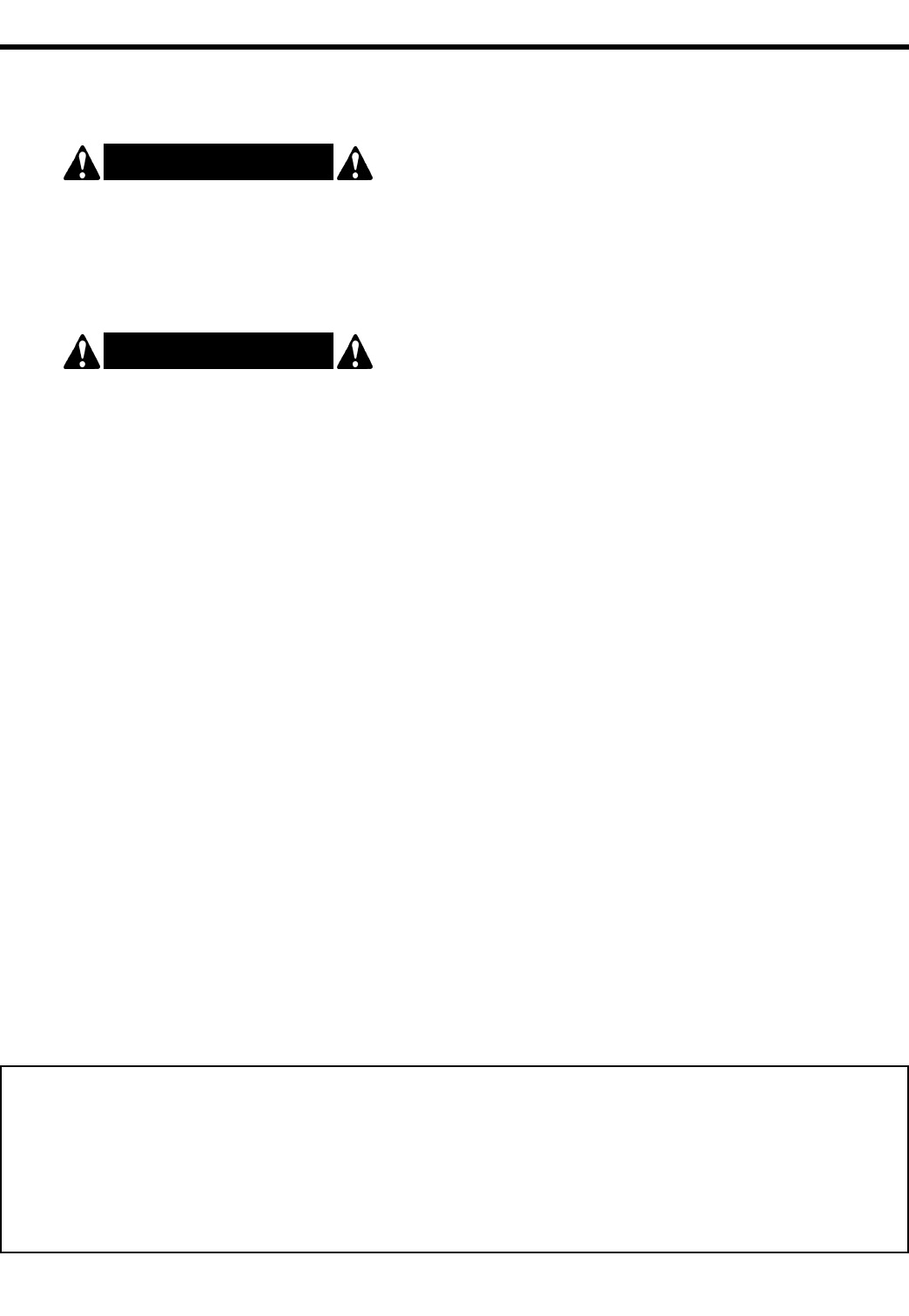
718
SAFETY INSTRUCTIONS (continued)
The use of any loader attachment is NOT recommended on tractor with a tricycle wheel arrangement.Tricycle
type tractors are unstable for front loader use.
A heavy load can cause instability in driving a tractor. Make sure the front or rear of the tractor is properly
counter-balanced with weights. Always drive slowly – especially around turns. An unstable tractor could steer
badly and possibly tip over, causing injury or death.
Operate only in daylight or good artificial light.
Always check to be sure the loader attachment is properly latched on the loader or that lock pins are installed.
Never permit any person other than the operator to ride or board the tractor or implement at any time. ALLOW
NO RIDERS!
Ensure that all safety shielding and safety signs are properly installed and in good condition.
Personal protection equipment including hard hat, safety glasses, safety shoes, and gloves are recommended
during assembly, installation, operation, adjustment, maintaining, repairing, removal, or moving the implement.
Do not allow long hair, loose fitting clothing or jewelry to be around moving parts.
Operate the loader attachment only with a tractor equipped with an approved Roll-Over Protective System
(ROPS). Always wear your seat belt on tractors equipped with a ROPS. Serious injury or even death could
result from falling off the tractor – particularly during a turnover when the operator could be pinned under the
ROPS or the tractor. Keep foldable ROPS systems in “locked up” position at all times.
PROLONGED EXPOSURE TO LOUD NOISE MAY CAUSE PERMANENT HEARING LOSS!
Tractors with or without equipment attached can often be noisy enough to cause permanent, partial hearing
loss. We recommend that you wear hearing protection on a full-time basis if the noise in the Operator’s posi-
tion exceeds 80db. Noise over 85db on a long-term basis can cause severe hearing loss. Noise over 90db
adjacent to the Operator over a long-term basis may cause permanent, total hearing loss. NOTE: Hearing loss
from loud noise (from tractors, chain saws, radios, and other such sources close to the ear) is cumulative over
a lifetime without hope of natural recovery.
PREPARA
TION (contin
ued)
OPERATIONAL SAFETY
The use of this equipment is subject to certain hazards which cannot be protected against by mechanical
means or product design. All operators of this equipment must read and understand this entire manual, pay-
ing particular attention to safety and operating instructions, prior to using. If there is something in this manu-
al you do not understand, ask your supervisor, or your dealer, to explain it to you.
OWNER SERVICE
Check the pins at the ends of the loader arms. Make
sure they are locked in place.
Periodically check all bolts to make sure they are tight.
Check the bolt on the forged spears to make sure it is
tight.
Lubricate loader as per instructions in loader manual.
Replace safety signs and instruction decals if damaged
or missing.
Replace any worn or damaged parts immediately. Do
not use attachment with any damaged parts.
WARNING!
Always stop the tractor, set brake, shut off engine,
remove key, and lower loader to ground before
attempting to service. Never leave equipment unat-
tended with engine running.
WARNING!
Do not work under a raised loader unless it is
securely blocked or held in position. Do not depend
on the hydraulic system to hold loader and attach-
ment in place.
REPLACE SAFETY SIGNS
IF DAMAGED OR MISSING.
MAINTENANCE
——————————————————
STORAGE
——————————————————
• Never store equipment with fuel in the tank inside a
building where fumes may reach an open flame or
spark. Allow engine to cool before storing in an
enclosure.
• Do not run engine indoors – exhaust gasses contain
carbon monoxide, and odorless and deadly poison.
• At the end of the working season or when the attach-
ment will not be used for a long period, it is good
practice to clean off any dirt or grease that may have
accumulated.
• Inspect the attachment for loose, damaged or worn
parts and adjust or replace if needed.
• Sand areas where paint is chipped or worn and repaint
to prevent rust.
• Storage location should be level and solid to make
hitching and unhitching easy.
• Always store in a clean, dry location away from chil-
dren and livestock.


















